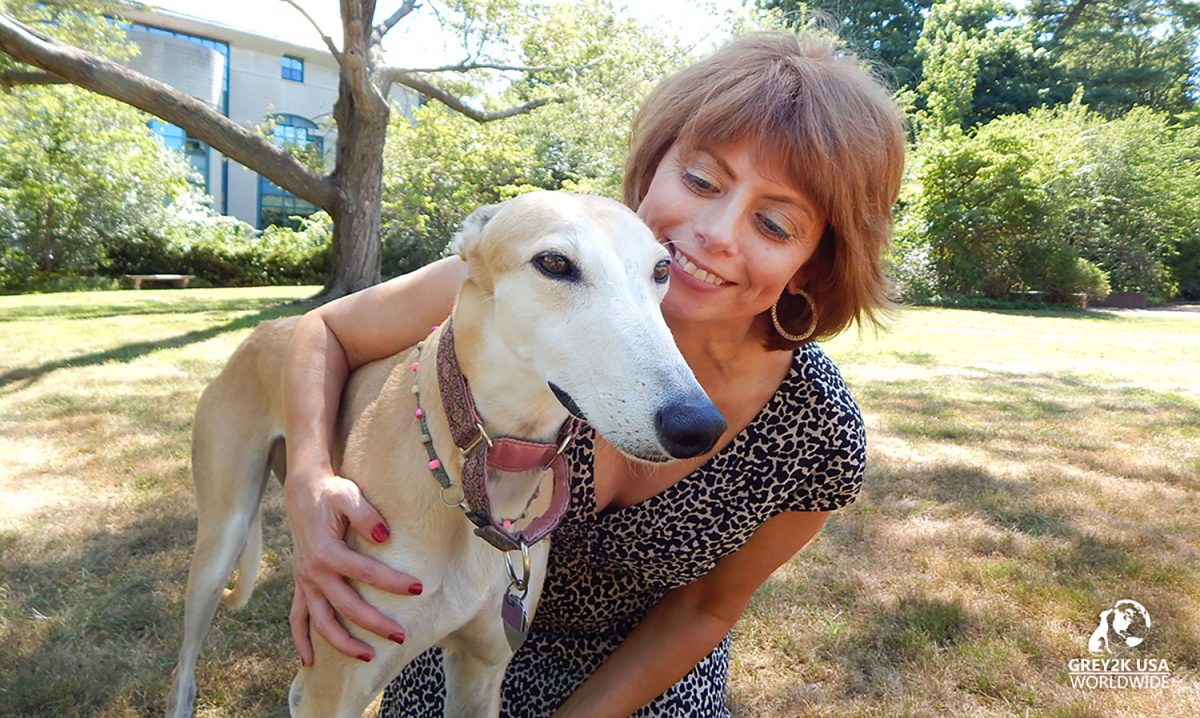
Christine Dorchak of GREY2K USA Worldwide
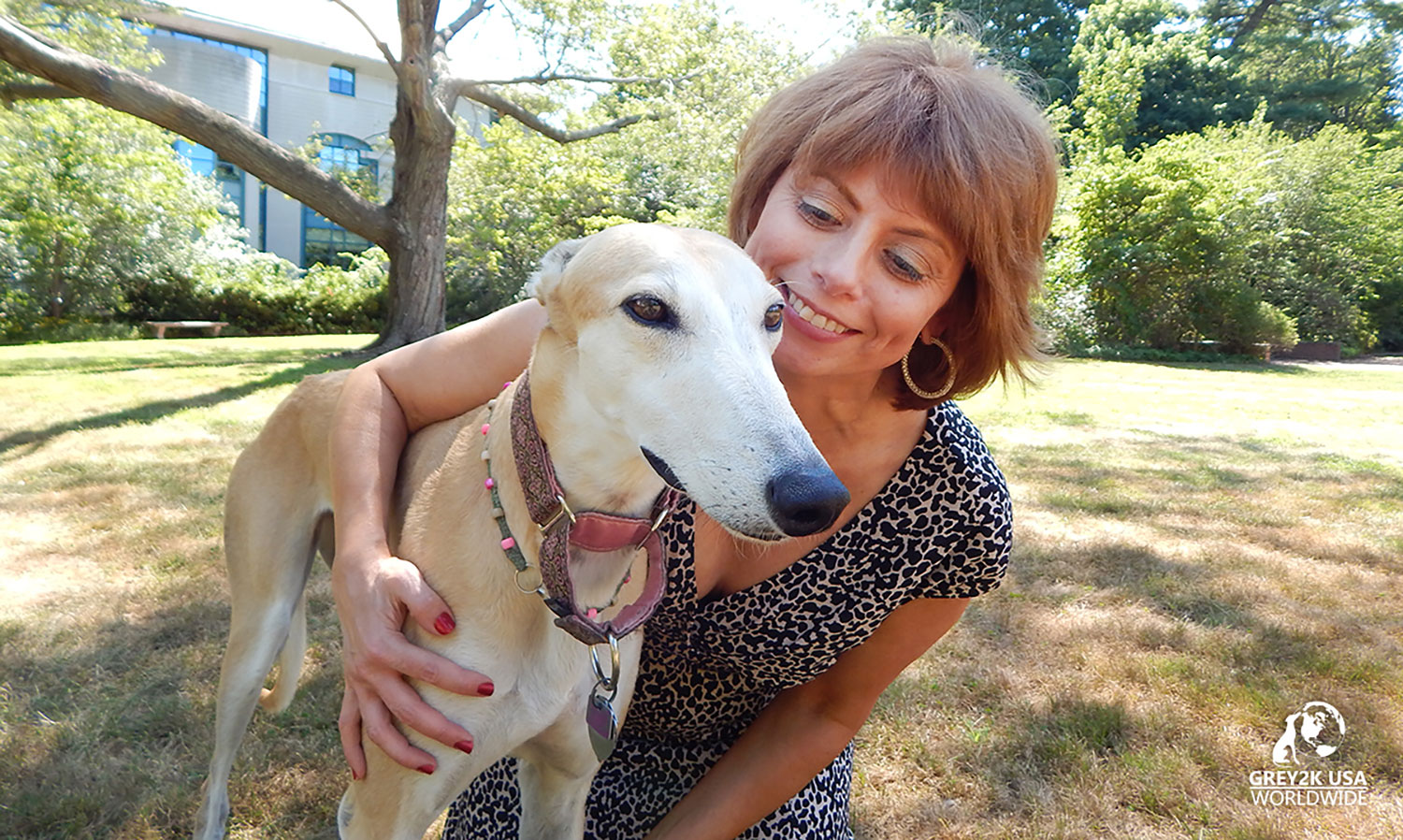
Christine Dorchak is the founder of GREY2K USA Worldwide, and is on a mission to end dog racing. She was inspired to create her organization in 1992, when she and her dog Kelsey were struck by a speeding train while out for a walk. Kelsey somehow managed to pull them slightly off course, preventing a head-on collision and saving their lives. When she awoke from a coma, her first words were, “How’s Kelsey?” She promised right then and there that if she could ever walk again, that she would devote her life to helping dogs, and that she and her Kelsey would do this work together.
Kelsey suffered a broken hip the day of our accident, but she lived until the age of fifteen, dying just a few days after Christine finished law school. She helped her through a long rehabilitation, four years of evening law classes and the early days of their campaigns, staying by her side as long as she could. It is Kelsey’s inspiration that continues to motivate her work for her fellow dogs each day.
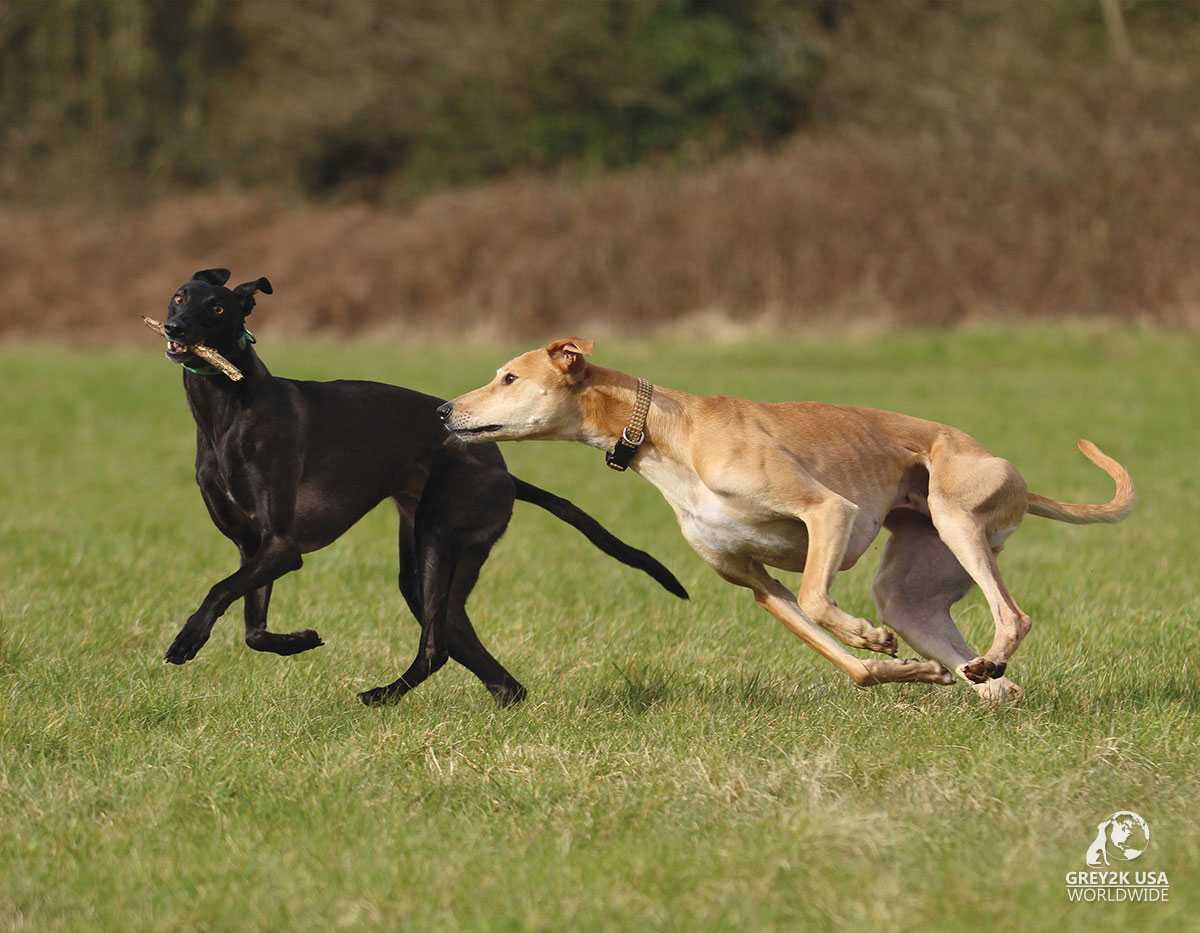
Christine outlines below some of the horrific conditions greyhounds endure, that have led her to dedicating her life to helping them. She also tells us more about her organization that is creating real change for these beautiful animals.

When not at the track, racing greyhounds endure lives of terrible confinement. They are kept inside warehouse-style kennels inside stacked cages that are barely large enough for them to stand up or turn around — for twenty or more hours a day! There are no toys for them and no play.
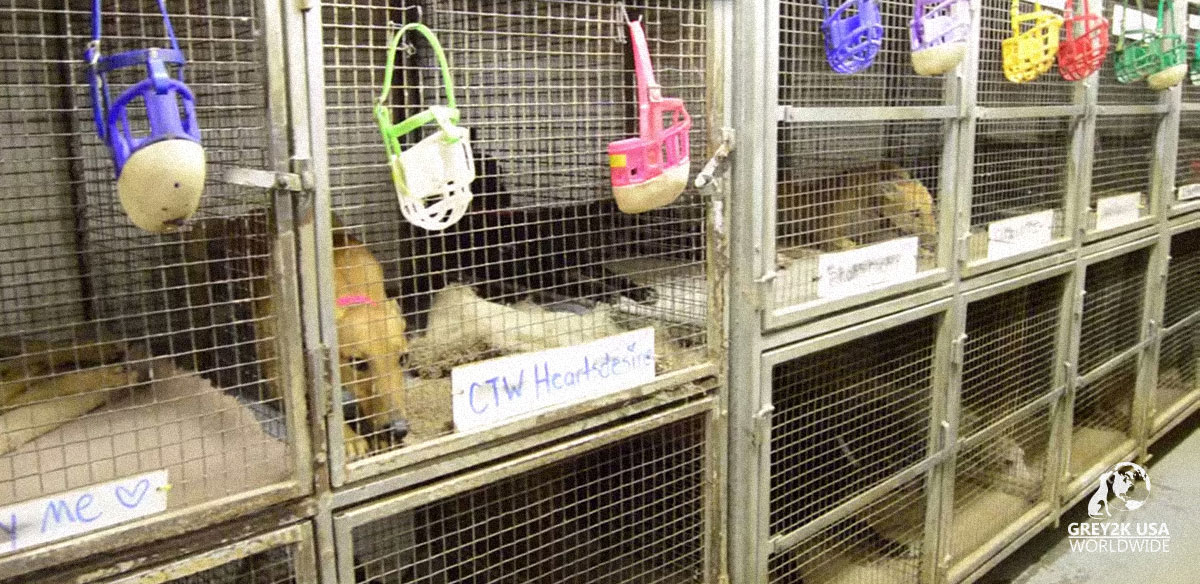
The minimum size for dog track cages is 32 inches high by 31 inches wide by 42 inches deep, with some slightly larger. According to the American Greyhound Council, greyhounds stand between 23 inches and 30 inches tall at the shoulder and weigh between fifty and eighty-five pounds. Using these dimensions provided by the industry, this means that large greyhounds cannot stand fully erect in their cages.
Large greyhounds cannot stand fully erect in their cages
Since there are no required turn-out times, the only extended period that a racing greyhound is outside of his cage is afforded when he is trucked over to the track to perform several times a month. Otherwise, “home” is marked by the four sides of his cage.
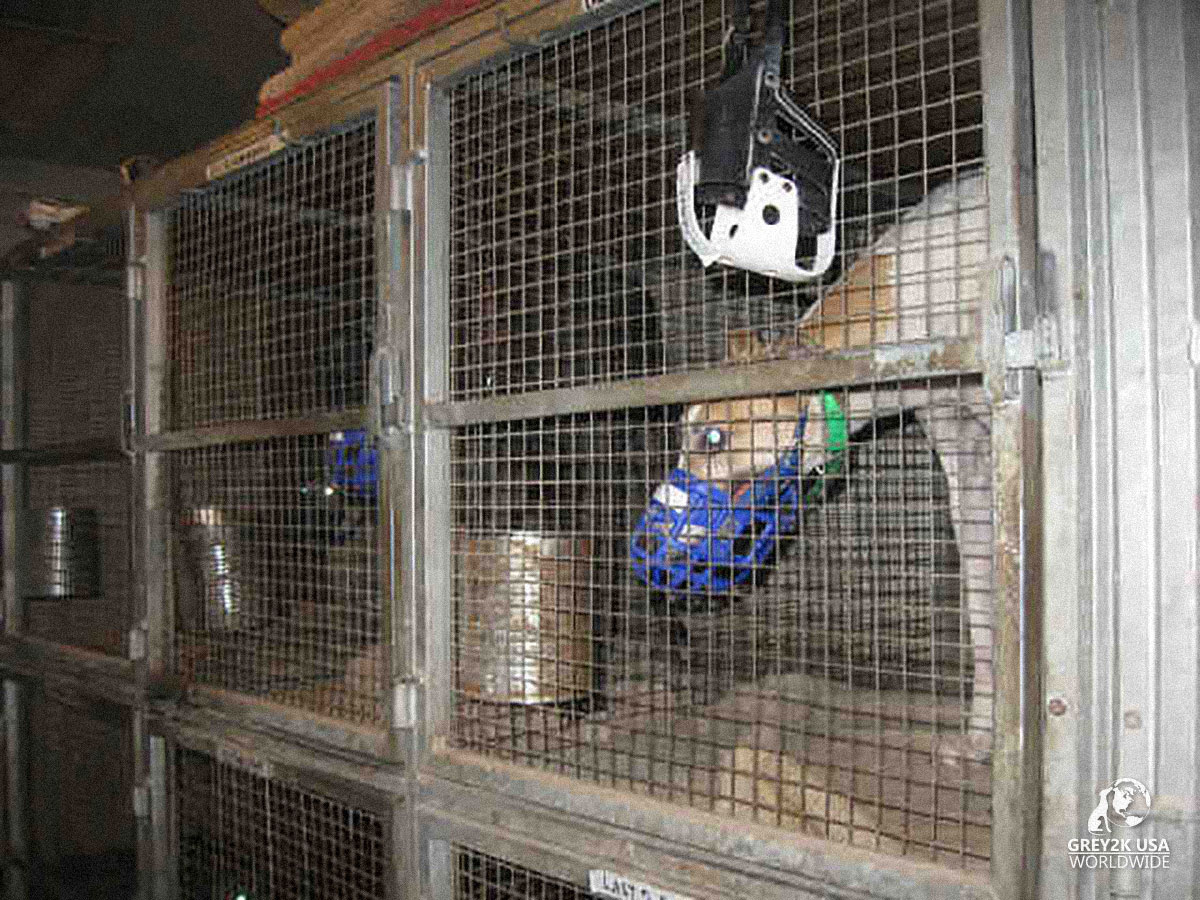

It’s no secret that when greyhounds are let out of their cages to race they often pay with their lives. They break their necks, suffer paralysis and some are even electrocuted. At two West Virginia tracks, 7,581 injuries have been reported since 2008 and 400 dogs have died. One of these dogs was “WW’s Laos,” who found out that a broken leg (the most common injury) can be a death sentence. Instead of receiving vet care after he fell down while racing, he was destroyed by his owner. Little Laos was just one year of age and had left the breeding farm weeks before his death.
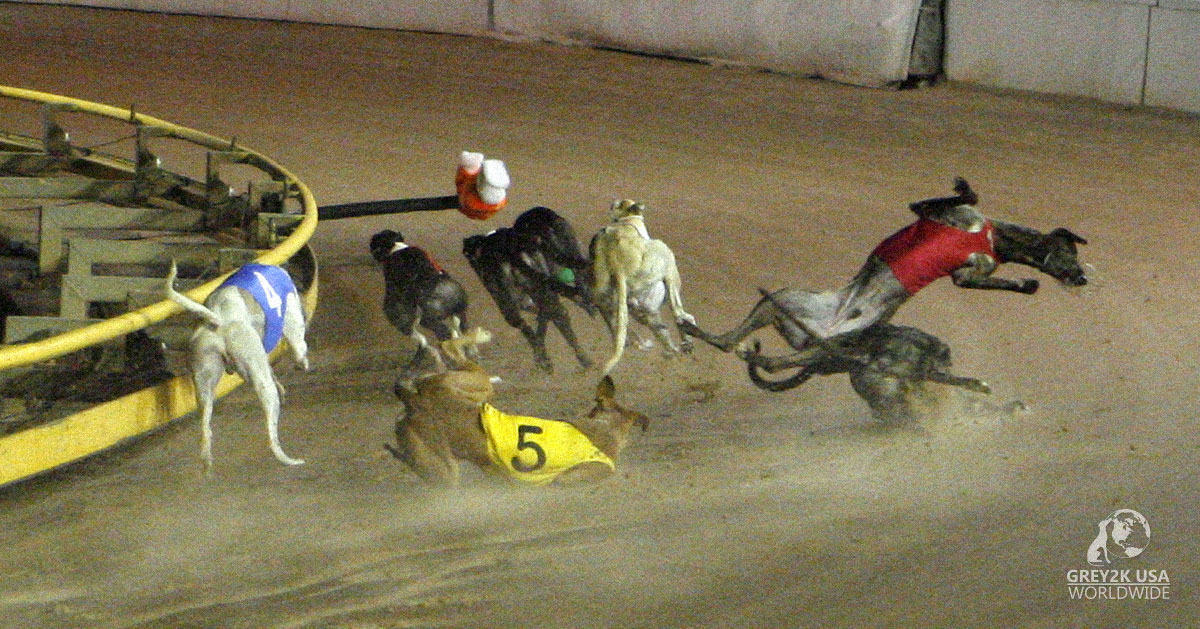
Recent news about the doping of greyhounds with cocaine is only the latest example of an industry that sacrifices animal welfare for profit. In a newly-released report, GREY2K USA revealed that there were 30 cocaine-positives at Florida’s Orange Park Kennel Club this year. In January, cocaine was found in five greyhounds at Derby Lane, another Florida track. State records reveal that greyhounds are “juiced” all across the country, in a wildly callous attempt to make some of the fastest mammals on earth run even faster.
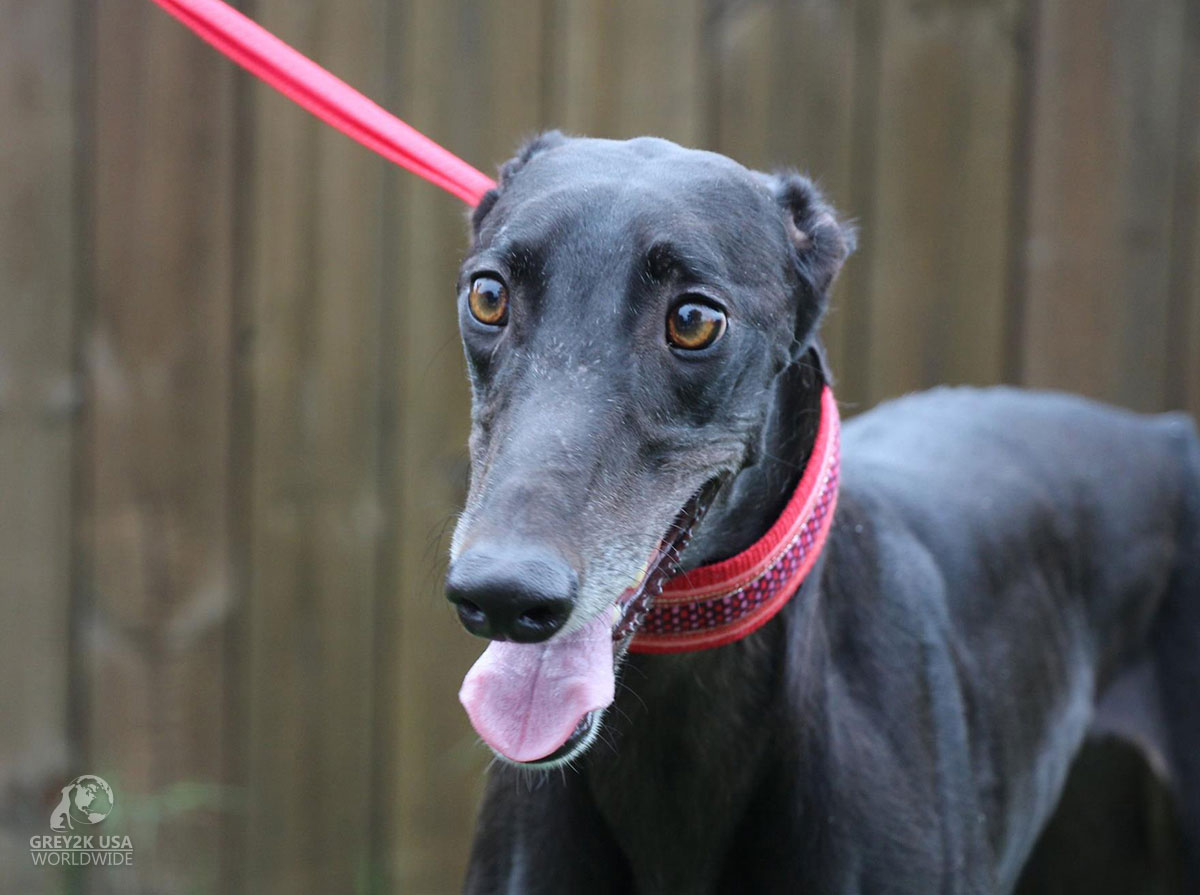
Equally disturbing news about the use of live animals to train dogs to race Down Under has exposed yet another heartless reality of greyhound training techniques. Sadly, despite the outrage these revelations prompted, the Australian government has not chosen to ban dog racing. Similar revelations in the USA dating back to the 1970’s led to a prohibition on live lure training here, although enforcement is questionable.
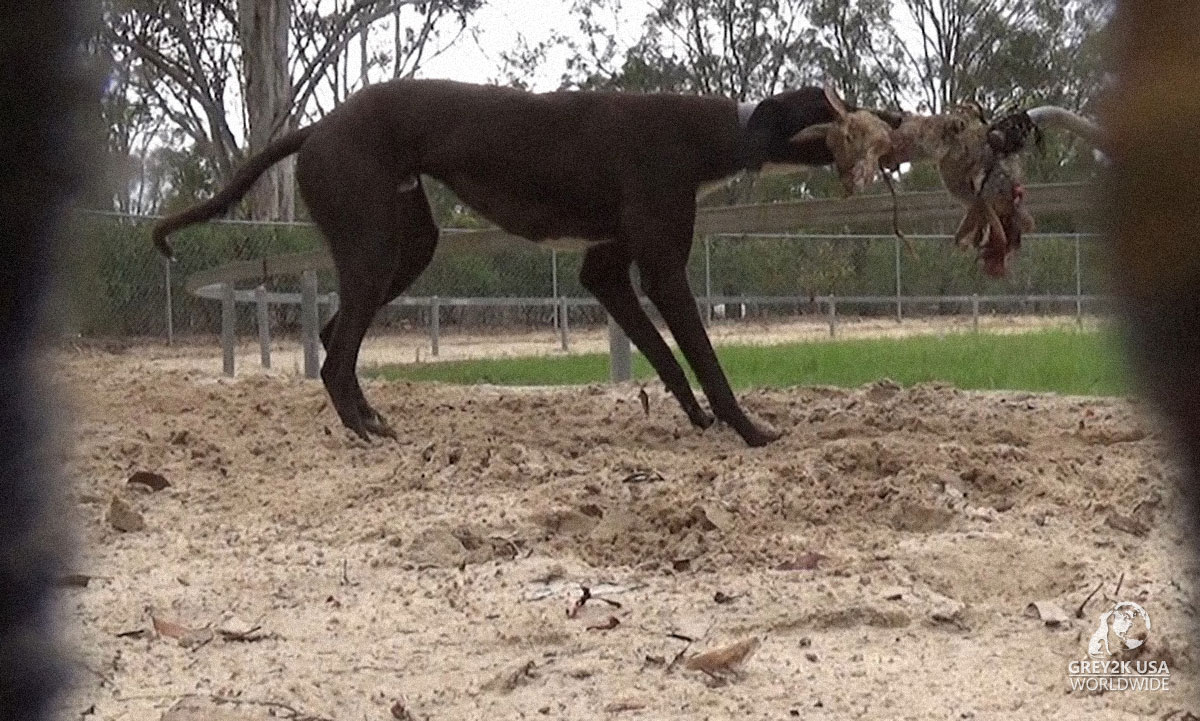

Another essential problem with dog racing is that thousands of dogs are bred every year in an effort to find younger, faster dogs. The older ones are then displaced, and their very lives put in immediate jeopardy. Will they be rescued or will they be destroyed? The lucky ones who do reach adoption will then displace other needy animals (cats, dogs, rabbits, others) also seeking homes. In this significant way, the racing industry aggravates a homeless animal population which is already overwhelming and immensely sad. We believe that best answer is to get to the root of the problem and end dog racing as quickly as possible.
The racing industry aggravates a homeless animal population which is already overwhelming and immensely sad
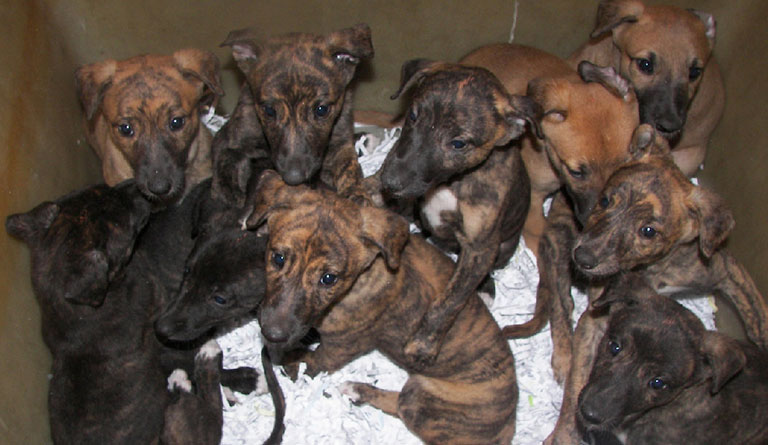
Even as this cruelty continues, attendance is shrinking by the year. The Association of Racing Commissioners International reports a 70% decline in wagering on dog racing since 2001, the year GREY2K USA was founded. Where there were nearly fifty dog tracks in fifteen states at that time, today there remain a total of 18 facilities operating in six states. Similarly, state revenue from greyhound racing continues to drop catastrophically. Between 2001 and 2014, state dog race revenue declined by more than 82% nationwide. In Florida, the country’s biggest dog racing state, regulatory costs have now exceeded revenues by as much as $3.3 million yet dog tracks continue to receive tax breaks and other incentives. States like West Virginia continue to subsidize live racing with tens of millions of dollars per year. This is money that would be better spent on schools, law enforcement, infrastructure and other important community needs.

In recent years, GREY2K USA has phased-out dog racing in many states and successfully prevented its introduction to countries such as South Africa, Jamaica and the Philippines. The organization’s most rewarding campaign involved a voter referendum in which four million people were asked to shut down the two tracks of our home state. In November 2008, Massachusetts citizens voted overwhelmingly in favor of the greyhounds, starting a chain of events that quickly led to the prohibition of dog racing in our sister states of New Hampshire and Rhode Island and more recently, Colorado and Arizona. The key to our efforts is a reliance on bona fide, official documentation only. Where previous efforts to end dog racing often amounted to a “he-said she-said” debate, today we let the greyhounds to speak for themselves through their own track records and photographs.
All told, we have helped close more than half of all US tracks, and we are now looking to apply our strategy to help end dog racing worldwide. There are currently eighteen tracks remaining in six states plus over 100 more racecourses in the seven jurisdictions of Australia, Ireland, Macau, Mexico, New Zealand, the United Kingdom and Vietnam. Please sign our petition to the leaders of the eight dog racing countries today.

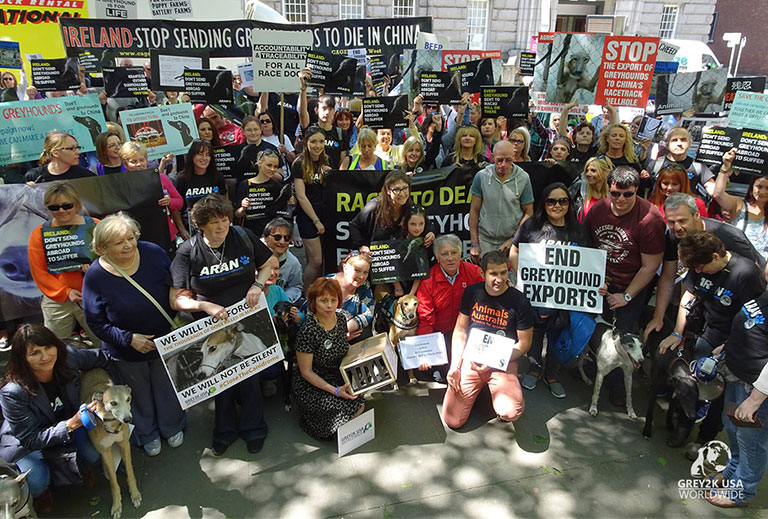

It’s time for a change, and we would like your help in making that change. Please join us in our fight to end dog racing.
My greyhound Gina is truly one of the lucky ones. She gives life to this struggle and reminds me that every dog deserves to be loved and protected. To learn more about dog racing, to adopt a greyhound and to work with us to save these gentle friends, please go to GREY2KUSA.org. Please sign our petitions and find us on Facebook and join the team that is working to give greyhounds the second chance they deserve.

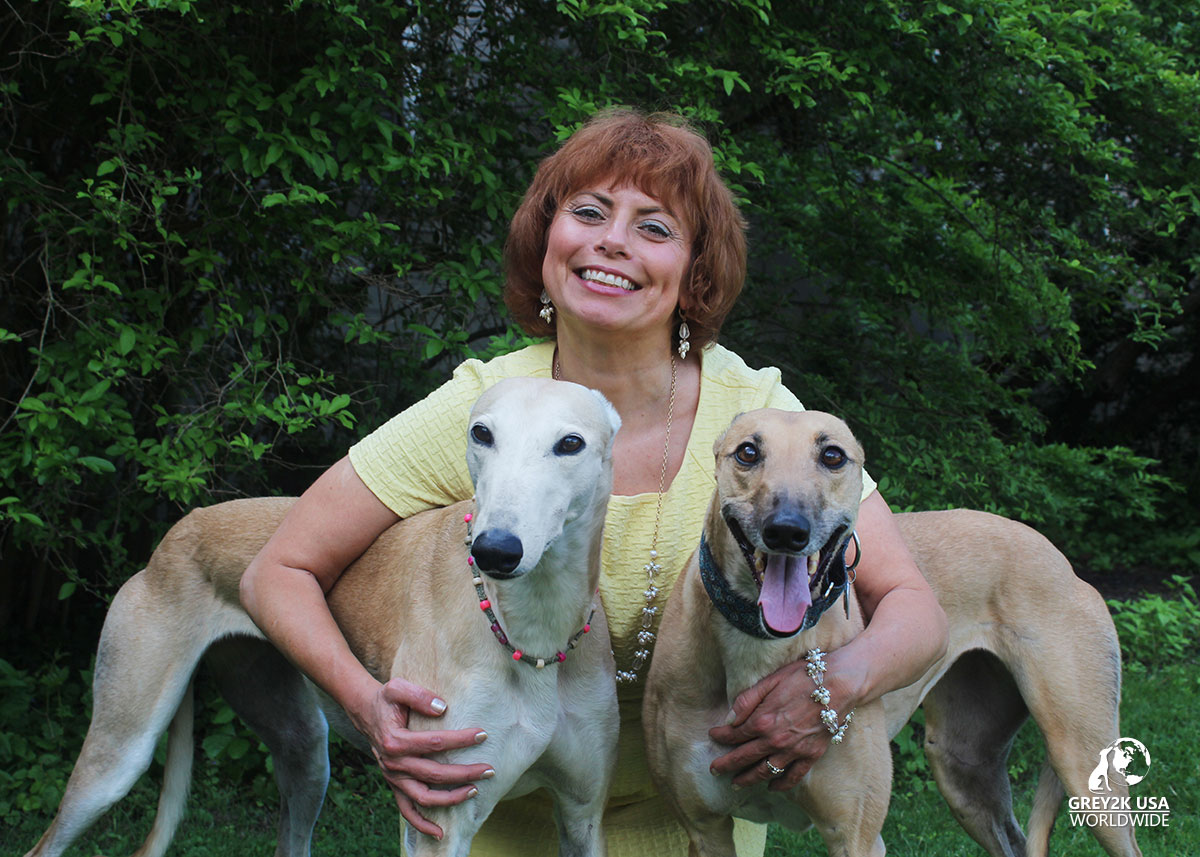

Christine Dorchak is the President and General Counsel of GREY2K USA Worldwide. Formed in 2001, it is the largest greyhound protection organization in the United States with more than 100,000 supporters. As a non-profit organization, the group works to pass laws to end the cruelty of dog racing and promote the adoption of ex-racers.

